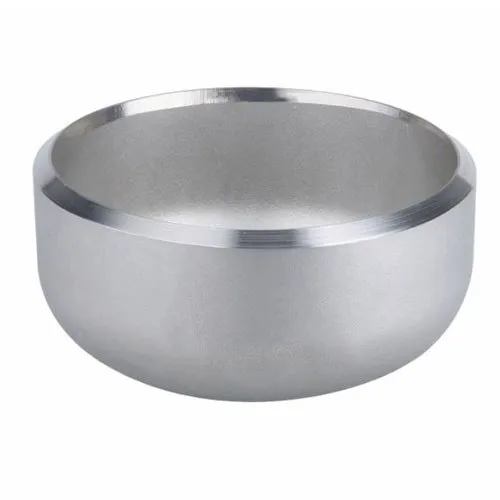-
Cangzhou Yulong Steel Co., Ltd.
-
Phone:
+86 13303177267 -
Email:
admin@ylsteelfittings.com
- English
- Arabic
- Italian
- Spanish
- Portuguese
- German
- kazakh
- Persian
- Greek
- French
- Russian
- Polish
- Thai
- Indonesian
- Vietnamese
- Zulu
- Korean
- Uzbek
- Hindi
- Serbian
- Malay
- Ukrainian
- Gujarati
- Haitian Creole
- hausa
- hawaiian
- Hebrew
- Miao
- Hungarian
- Icelandic
- igbo
- irish
- Japanese
- Javanese
- Kannada
- Khmer
- Rwandese
- Afrikaans
- Albanian
- Amharic
- Armenian
- Azerbaijani
- Basque
- Belarusian
- Bengali
- Bosnian
- Bulgarian
- Catalan
- Cebuano
- China
- China (Taiwan)
- Corsican
- Croatian
- Czech
- Danish
- Esperanto
- Estonian
- Finnish
- Frisian
- Galician
- Georgian
- Kurdish
- Kyrgyz
- Lao
- Latin
- Latvian
- Lithuanian
- Luxembourgish
- Macedonian
- Malgashi
- Malayalam
- Maltese
- Maori
- Marathi
- Mongolian
- Myanmar
- Nepali
- Norwegian
- Norwegian
- Occitan
- Pashto
- Dutch
- Punjabi
- Romanian
- Samoan
- Scottish Gaelic
- Sesotho
- Shona
- Sindhi
- Sinhala
- Slovak
- Slovenian
- Somali
- Sundanese
- Swahili
- Swedish
- Tagalog
- Tajik
- Tamil
- Tatar
- Telugu
- Turkish
- Turkmen
- Urdu
- Uighur
- Welsh
- Bantu
- Yiddish
- Yoruba

Dec . 23, 2024 07:21 Back to list
DIN 2527 Flange Size Specifications and Dimensional Guidelines for Industrial Applications
Understanding DIN 2527 Flange Dimensions A Comprehensive Overview
Flanges play a critical role in piping systems, providing the means to connect pipes, valves, pumps, and similar equipment. Among the various standards that govern flange dimensions, DIN 2527 is particularly noteworthy, especially in Europe. This standard specifies the dimensions, tolerances, and testing for pipe flanges that ensure the compatibility and safety of piping systems across various applications.
DIN (Deutsches Institut für Normung) is the German Institute for Standardization, and it has established numerous standards over the years to promote quality and safety in engineering practices. The DIN 2527 standard specifically addresses the dimensions and tolerances of flanges made of different materials, thus facilitating standardized communication and interchangeability within industries.
Key Features of DIN 2527 Flanges
1. Dimension Specifications The DIN 2527 standard outlines precise dimensions for different flange types, including diameter, thickness, and bolt circle diameter. This information is critical for ensuring that flanges can be properly aligned and secured to prevent leaks and inefficiencies within a system.
2. Material Compatibility Flanges governed by DIN 2527 can be manufactured from various materials, including carbon steel, stainless steel, and alloy materials. This flexibility allows companies to choose flanges that suit specific operating conditions, such as temperature, pressure, and chemical exposure.
3. Types of Flanges The DIN 2527 standard includes specifications for various flange types, including weld neck, blind flanges, and slip-on flanges. Each type has unique characteristics that make them suitable for different applications. For instance, weld neck flanges provide excellent stress distribution, while slip-on flanges are easier to install.
4. Tolerances Tolerances are an essential aspect of the DIN 2527 standard, as they dictate the acceptable limits for dimension variations. This ensures that the flanges fit properly without causing stress concentrations that could lead to failure.
din 2527 flange dimensions

5. Bolt Specifications The standard also provides guidelines on bolt sizes and patterns, essential for securing the flanges together. The bolt pattern influences the load distribution and is crucial for preventing leakage and ensuring structural integrity.
Applications of DIN 2527 Flanges
DIN 2527 flanges are widely used across various sectors, including oil and gas, chemical processing, water treatment, and manufacturing. Their adaptability to different environments and conditions makes them a popular choice for engineers and designers.
1. Oil and Gas In the oil and gas industry, flanges must withstand high pressures and corrosive substances. The specifications in DIN 2527 ensure that flanges can maintain their integrity under extreme conditions, preventing leaks and ensuring safety.
2. Plumbing and Water Supply Flanges are essential components in plumbing systems, providing secure connections between pipes and valves. The reliability of DIN 2527 flanges makes them suitable for municipal water supply systems where safety and durability are critical.
3. Chemical Processing Flanges in chemical processing must be resistant to corrosive materials. DIN 2527 allows for the use of various materials to meet the specific needs of different chemicals and conditions.
Conclusion
DIN 2527 flange dimensions are vital for the construction and maintenance of various engineering systems. By adhering to this standard, manufacturers ensure that their products fit seamlessly into existing infrastructure while maintaining safety and efficiency. As industries evolve and new materials and technologies emerge, standards like DIN 2527 remain essential for guiding best practices and ensuring that flanges continue to perform at the highest level across various applications. Selecting the appropriate flange dimensions according to DIN 2527 is not merely a matter of compliance; it is crucial for the reliability and longevity of piping systems worldwide.
Latest news
-
ANSI 150P SS304 SO FLANGE
NewsFeb.14,2025
-
ASTM A333GR6 STEEL PIPE
NewsJan.20,2025
-
ANSI B16.5 WELDING NECK FLANGE
NewsJan.15,2026
-
ANSI B16.5 SLIP-ON FLANGE
NewsApr.19,2024
-
SABS 1123 FLANGE
NewsJan.15,2025
-
DIN86044 PLATE FLANGE
NewsApr.19,2024
-
DIN2527 BLIND FLANGE
NewsApr.12,2024
-
JIS B2311 Butt-Welding Fittings LR/SR 45°/90° /180°Seamless/Weld
NewsApr.23,2024











